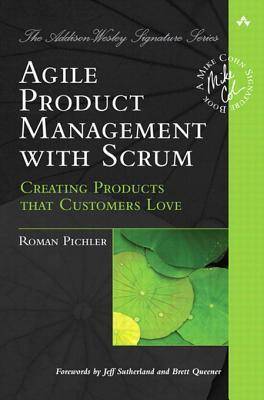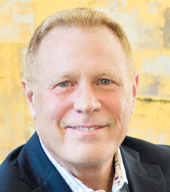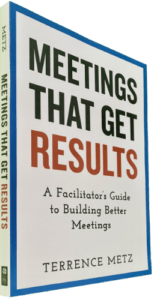 “Creating Products that Customers Love” strikes us as highly poignant, as much of the world heads toward a holiday season with much gift-giving.
“Creating Products that Customers Love” strikes us as highly poignant, as much of the world heads toward a holiday season with much gift-giving.
Roman Pickler’s book, “Agile Product Management with Scrum” provides the single best book, barely over 100 pages, to understand the role of a Product Owner. Some even claim it remains one of the seven must-read books about the Agile mindset. Therefore, with a foreword by Jeff Sutherland, and included within the set of Mike Cohn’s signature books, take two to three hours and give it a quick read. However, it does presume some previous familiarity with the Agile Scrum framework.
Product Owner Role
Beginning with an understanding of the role of Product Owner the old-school versus new-school comparison of product management certainly reads like MGRUSH’s explanation of traditional leadership versus servant leadership. Stressing the importance of self-organizing teams, our “Nobody is Smarter than Everybody” gets duplicated with Pickler’s:
“The wisdom of many is preferred to the brilliance of one.”[1]
Naturally, the Product Owner role stresses collaboration, particularly with the Scrum Master and product stakeholders. Because, as Product Owner, they . . .
- Represent the customers and the product users
- Identify and describe customer needs and product functionality
- Lead the visioning activities that bring the vision to life
- Stress teamwork and collaborative decision-making to ensure shared ownership
Envisioning the Product
Therefore the Product Owner, through the Product Backlog, converts the product vision[2] to attributes by securing answers to solid questions such as:
- Who is going to purchase the product?
- Who is going to use the product?
- What needs does the product address?
- How much value does the product add?
- What attributes are critical for the product’s success?
- Where will the product excel?
- Compared to competitive alternatives, what are the unique selling points?
- Where and how much revenue will be derived?
- What do we need to do to win?
Pickler leans on Cockburn’s logic of prioritization, namely:
- Sacrifice others for this
- Try to keep
- Sacrifice this for others
After that, they are combined into a product roadmap. MG RUSH covers numerous methods in other articles, such as:
- Plan, Do, Check, Act
- Perspectives and Scenarios
- Trade Journal Review
- Kano Model
Working with the Product Backlog
Pickler follows with evidence-based support for managing the Product Backlog. He begins by applying DEEP that he attributes to Mike Cohn:
- Detailed appropriately
- Estimated
- Emergent
- Prioritized
He further suggests that Product Backlog descriptions can be detailed, or course-graining (called epics). The Product Owner is responsible for structuring and refining the Product Backlog. Items may be grouped by functionality to create themes. For instance, the calendar function is a theme of a smartphone. Each theme generally represents “between two and five-course requirements. (epics)”
Next, he discusses methods of valuing or prioritizing backlog items that help the Product Owner prepare for Sprint Planning. Therefore, the Product Owner is encouraged to decompose and refine product backlog items breaking down epics into detailed user stories. This technique is referred to as “slicing the cake” (Cohn, 2004, pg 76). He also references, but does not discuss in detail, Bill Wake’s INVEST criteria (stories need to be independent, negotiable, valuable, estimable, small, and testable).
For sizing stories Pickler offers up t-Shirt sizing (XS through XXXL) and Planning Poker, using a Fibonacci scale through 13 and then substitutes 20 for 21 as Huge (or, XXXL). Today there are apps abounding for smartphones. Therefore, simply search “planning poker app” to generate numerous options for Android and iOS. Ours includes a coffee break symbol and a questions mark and includes pure Fibonacci and t-shirt sizing options as well.
In addition, his discussion of nonfunctional requirements and scaling the product backlog demand careful reading. Similarly, slow down to review his along descriptions of common mistakes when refining the product backlog such as:
- Disguised Requirements Specification
- Wish List for Santa
- Requirements Push
- Grooming Neglect
- Competing Backlogs
Other Product Owner Considerations
Finally, his book ends with commentary focused on large projects, discussing items like velocity and burndown. Prior to his final discussion of transitioning into the role of Product Owner, he stresses additional collaboration and makes comments covered by many other posts such as:
- Sprint Planning
- Definition of Done
- Daily Scrum
- Sprint Backlog
- Burn down and Velocity
- Sprint Review
- Sprint Retrospective
Therefore, every Product Owner should review this valuable book, and other Sprint Team members could learn as well. After all, “Nobody is Smarter than Everybody.”
[1] Likewise, according to Google’s 10 Golden Rules:
7. Strive to reach consensus. Modern corporate mythology has the unique decision-maker as a hero. We adhere to the view that the “many are smarter than the few,” and solicit a broad base of views before reaching any decision. At Google, the role of the manager is that of an aggregator of viewpoints, not the dictator of decisions. Building a consensus sometimes takes longer, but always produces a more committed team and better decisions.” — by Eric Schmidt, CEO of Google
[2] Defined by Ken Schwaber as: “The vision describes why the project is being undertaken and what the desired end state is.” — Agile and Project Management with Scrum (2004, pg 68)
______
Don’t ruin your career by hosting bad meetings. Sign up for a workshop or send this to someone who should. MGRUSH workshops focus on meeting design and practice. Each person practices tools, methods, and activities daily during the week. Therefore, while some call this immersion, we call it the road to building high-value facilitation skills.
Our workshops also provide a superb way to earn up to 40 SEUs from the Scrum Alliance, 40 CDUs from IIBA, 40 Continuous Learning Points (CLPs) based on Federal Acquisition Certification Continuous Professional Learning Requirements using Training and Education activities, 40 Professional Development Units (PDUs) from SAVE International, as well as 4.0 CEUs for other professions. (See workshop and Reference Manual descriptions for details.)
Want a free 10-minute break timer? Sign up for our once-monthly newsletter HERE and receive a free timer along with four other of our favorite facilitation tools.
______
With Bookmarks no longer a feature in WordPress, we need to append the following for your benefit and reference
- 20 Prioritization Techniques = https://foldingburritos.com/product-prioritization-techniques/
- Creativity Techniques = https://www.mycoted.com/Category:Creativity_Techniques
- Facilitation Training Calendar = https://mgrush.com/public-facilitation-training-calendar/
- Liberating Structures = http://www.liberatingstructures.com/ls-menu
- Management Methods = https://www.valuebasedmanagement.net
- Newseum = https://www.freedomforum.org/todaysfrontpages/
- People Search = https://pudding.cool/2019/05/people-map/
- Project Gutenberg = http://www.gutenberg.org/wiki/Main_Page
- Scrum Events Agendas = https://mgrush.com/blog/scrum-facilitation/
- Speed test = https://www.speedtest.net/result/8715401342
- Teleconference call = https://youtu.be/DYu_bGbZiiQ
- The Size of Space = https://neal.fun/size-of-space/
- Thiagi/ 400 ready-to-use training games = http://thiagi.net/archive/www/games.html
- Visualization methods = http://www.visual-literacy.org/periodic_table/periodic_table.html#
- Walking Gorilla = https://youtu.be/vJG698U2Mvo

Terrence Metz, president of MG RUSH Facilitation Training, was just 22-years-old and working as a Sales Engineer at Honeywell when he recognized a widespread problem—most meetings were ineffective and poorly led, wasting both time and company resources. However, he also observed meetings that worked. What set them apart? A well-prepared leader who structured the session to ensure participants contributed meaningfully and achieved clear outcomes.
Throughout his career, Metz, who earned an MBA from Kellogg (Northwestern University) experienced and also trained in various facilitation techniques. In 2004, he purchased MG RUSH where he shifted his focus toward improving established meeting designs and building a curriculum that would teach others how to lead, facilitate, and structure meetings that drive results. His expertise in training world-class facilitators led to the 2020 publication of Meetings That Get Results: A Guide to Building Better Meetings, a comprehensive resource on effectively building consensus.
Grounded in the principle that “nobody is smarter than everybody,” the book details the why, what, and how of building consensus when making decisions, planning, and solving problems. Along with a Participant’s Guide and supplemental workshops, it supports learning from foundational awareness to professional certification.
Metz’s first book, Change or Die: A Business Process Improvement Manual, tackled the challenges of process optimization. His upcoming book, Catalyst: Facilitating Innovation, focuses on meetings and workshops that don’t simply end when time runs out but conclude with actionable next steps and clear assignments—ensuring progress beyond discussions and ideas.



